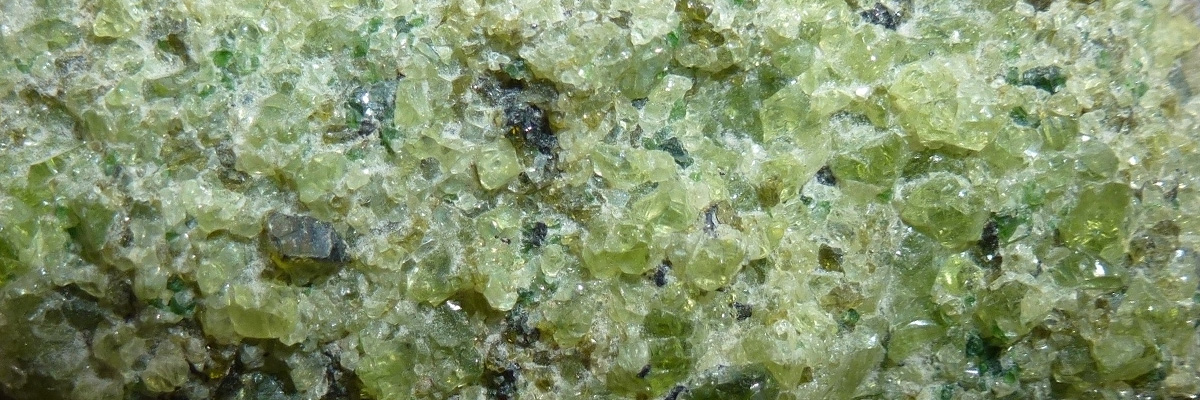Olivine is a magnesium iron silicate mineral belonging to the orthorhombic crystal system and is part of the nesosilicate subclass. This mineral is known for its olive-green to yellow-green color, vitreous luster, and granular to conchoidal fracture. Olivine typically forms compact masses, granular aggregates, or well-formed individual crystals. It is commonly found in ultramafic igneous rocks, such as peridotite, and is often associated with minerals like pyroxene, chromite, and serpentine.
Usage
Olivine is primarily used as a refractory material due to its high melting point and resistance to thermal shock, making it suitable for applications in the steel and glass industries. In addition, olivine sand is used in the foundry industry as a molding material for casting metals, as well as in water filtration systems and abrasive products. The mineral is also a significant source of magnesium, which is extracted for various industrial purposes.
Gemstone
Olivine is considered a gemstone when found in its transparent, gem-quality form, and is commonly referred to as peridot. This attractive gemstone is valued for its vibrant green hue, which can range from yellow-green to olive-green, and its high refractive index, contributing to its bright sparkle. Peridot is popular in various jewelry items, such as rings, necklaces, and earrings, and is also the birthstone for the month of August.
Origin
Olivine forms in nature through various geological processes, primarily the cooling and crystallization of magma in the Earth’s mantle and crust. The mineral can also be found in meteorites, formed during the early stages of our solar system’s formation. Olivine’s formation is influenced by the presence of magnesium and iron in the molten rock, and the resulting crystals can vary in size and shape.
Occurrence
Olivine is commonly found in ultramafic igneous rocks, such as peridotite, dunite, and basalts, as well as in metamorphic rocks like serpentinite. The mineral can also occur as a result of volcanic activity, in which olivine-rich rocks are brought to the Earth’s surface. Significant deposits of olivine can be found in countries such as the United States, Norway, Australia, and Egypt, which are known for their abundance of geologically suitable environments for the formation of olivine.
Metaphysical
In metaphysical and spiritual practices, olivine is believed to possess a range of properties. The mineral is said to promote emotional balance, self-confidence, and the release of negative energy. Olivine is also considered a stone of transformation, helping individuals to embrace change and growth in their lives. Additionally, the mineral is believed to enhance one’s connection to nature, bringing about a sense of inner peace and harmony.
| Class | Nesosilicates |
| Formula | (Mg,Fe)2SiO4 |
| Luster | Vitreous |
| Hardness (Mohs) | 6.5 – 7 |
| Streak | White |
| Color | Olive-green to yellow-green |
| Cleavage | Poor to none |
| Specific Gravity | 3.27 – 3.37 |


